Kenneth Clark once dismissed the works of Frans Hals as ‘revoltingly cheerful and horribly skilful’ but then admitted that he had nevertheless come to love ‘their unthinking conviviality’. Perhaps what Clark really objected to before his somewhat de haut en bas conversion was not Hals’s facility but that he breached protocol: he was the first artist to blur the distinction between the genre scene and the portrait. His sitters often seem as if they have stepped out of the tavern or a lively domestic or civic gathering and have forgotten to assume due solemnity when they sit alone in front of the painter – they merely continue the dropped conversation, this time with Hals.
A baker’s dozen of these conversations are currently in progress in the Wallace Collection’s exceptional exhibition, ‘Frans Hals: The Male Portrait’. The show, beautifully lit and hung and giving each of the 13 portraits space to breathe, is further proof of the transformation being wrought in Manchester Square by Xavier Bray, director since 2016. The portraits, which span Hals’s career from the 1610s to his death in 1666, show the breadth of both his compositions – from the casual to the stately – and also of his styles. Seen together in the same room, they resemble one of his celebrated group portraits of guildsmen or militia officers that fill the Hals Museum in Haarlem, but here disassembled into their constituent parts.
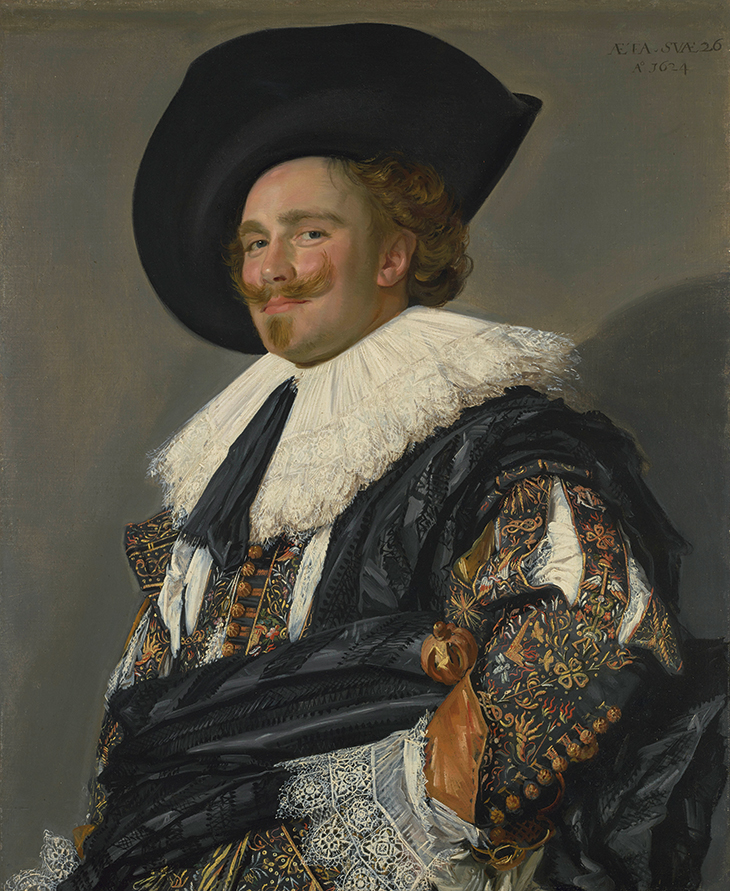
The Laughing Cavalier (1624), Frans Hals. The Wallace Collection. Photo: © Trustees of the Wallace Collection, London
At the centre of the exhibition is the Wallace’s own Laughing Cavalier (1624), the painting that spurred the revival of the painter’s reputation in the late 19th century when it was sold in Paris in 1865 to the 4th Marquess of Hertford for 51,000 francs, six times its estimate. The painting was given its title only in 1888 and little about it is certain except that it shows an unknown, wealthy young man dressed in the latest sumptuous French fashions – the antithesis of the blacks favoured by the Spanish Habsburgs. What is clear is that the sitter is neither a cavalier nor is he laughing; indeed, as he looks back at you – and at the other portraits – from the gallery’s end wall, that non-laugh is a mark of condescension bordering on the supercilious.
This is the first time the portrait has been hung alongside its peers and there is little sign in the picture of Clark’s ‘unthinking conviviality’ – quite the opposite. It is painted with extreme care and without the bravura rapidity some of the other pictures display. There is nothing in the man’s expression to invite closer acquaintance. Clark was perhaps influenced by Hals’s reputation as a sot, the legacy of Arnold Houbraken’s biography of 1718, which noted that ‘It was Frans’ custom to fill himself to the gills each evening.’ Hals had died more than half a century earlier and Houbraken’s claim was based on imaginative interpretation rather than fact, but it stuck nevertheless.
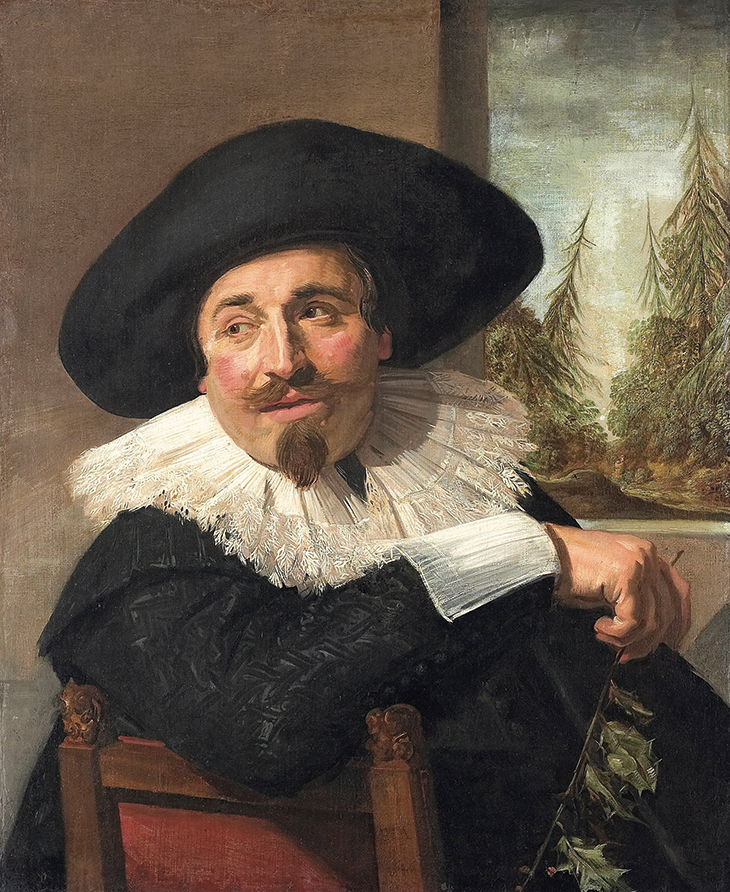
Isaac Abrahamsz Massa (1626), Frans Hals. Art Gallery of Ontario, Toronto
In some of the portraits it is easy to see the appeal of the story. If Hals were a toper that might help explain the unprecedented vivacity of portraits such as those of Isaac Massa (1626) and Pieter van den Broecke (c. 1633). Massa, a merchant and diplomat who spent several years in Russia and published the first Western account of Siberia, turns in his chair with his arm resting on its back as if speaking to someone in the room standing to the painter’s left. Van den Broecke, a merchant, admiral in the Dutch East India Company and possibly the first Dutchman to taste coffee, looks directly at the painter, his hair unbrushed and his hand resting on his admiral’s baton. The ease and informality of both portraits, which brilliantly capture a fleeting instant, was not the result of drink, however, but of friendship – both men were witnesses at the baptisms of Hals’s daughters.
The portraits are also a reflection of Hals’s place in Haarlem society. His parents moved to the city in around 1586 after the fall of Antwerp to Spanish forces, when Hals was about three years old, and he lived for the rest of his life, apart from a trip back to Antwerp, where he probably saw paintings by Rubens, whose influence can be felt in some of his portraits, not least The Laughing Cavalier. Because Hals refused to travel to paint his sitters, they came to him, and were therefore largely fellow citizens, mostly of the bourgeois merchant class. Hals knew the majority of his sitters, and it shows.
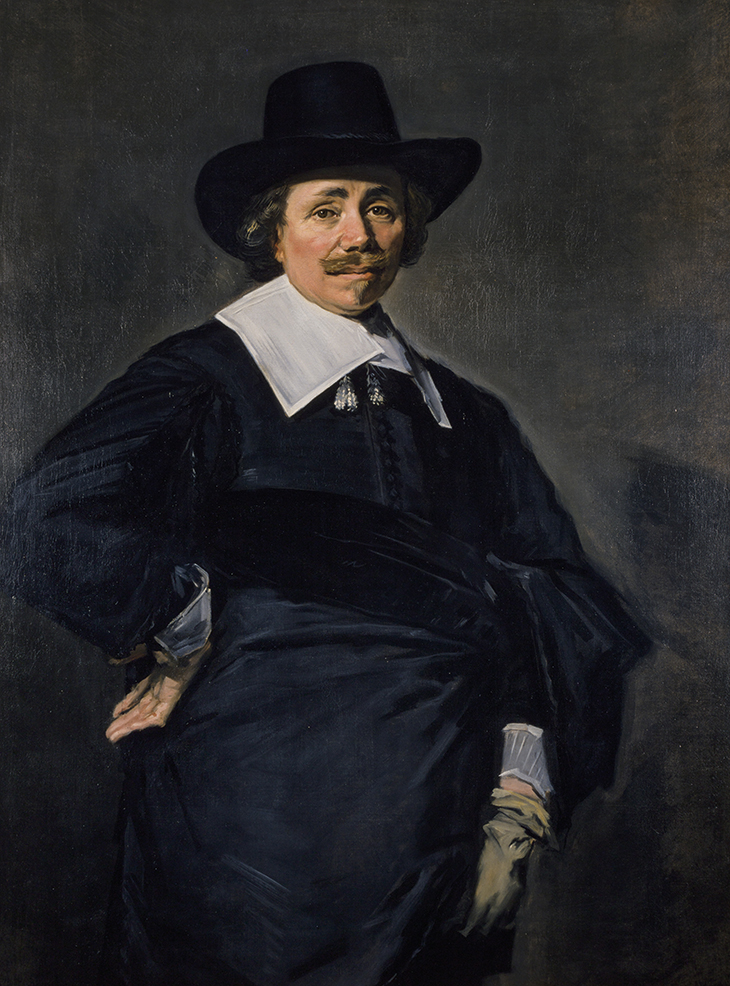
Portrait of François Wouters (1645), Frans Hals. National Galleries of Scotland, Edinburgh
Not that he was incapable of objectivity. There is poignancy in the eyes of the brewer and civic dignitary François Wouters (1645), gravitas in the Portrait of a Man (early 1650s) from the Met in New York, while a slight apprehension of the painter – might he be poking fun? – undercuts the solemnity of the full-figured Nicolaes Pietersz Duyst van Voorhout (c. 1636–38), who takes the same pose as the Laughing Cavalier but with more bombast than real assurance and wears a tunic of straining grey satin, magnificently brushed in, cloaking his brewer’s paunch.
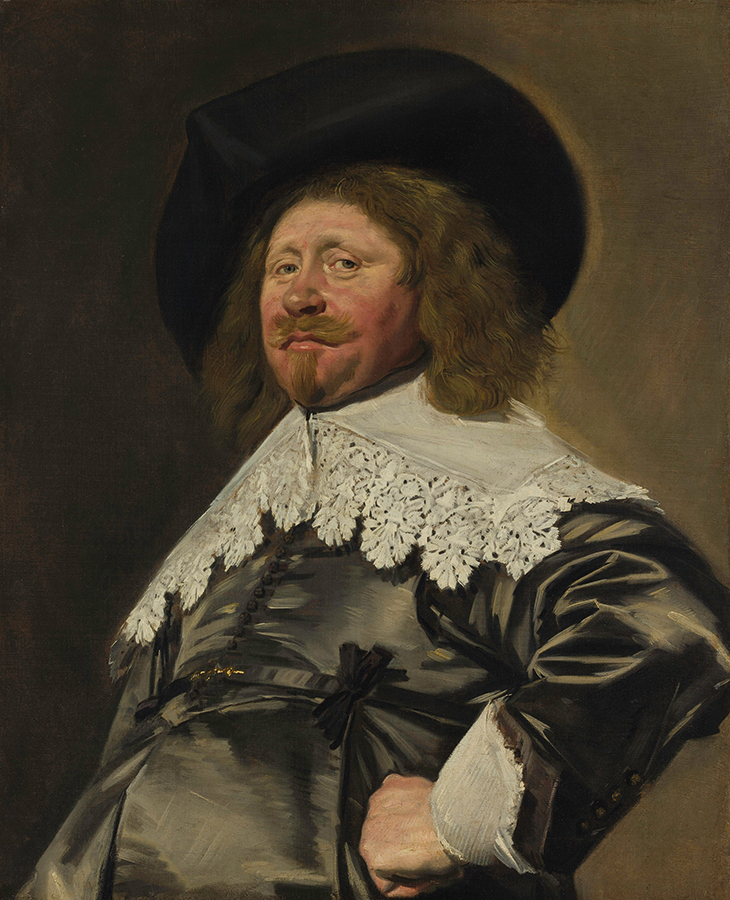
Portrait of a Man, Possibly Nicolaes Pietersz Duyst van Voorhout (c. 1636–38), Frans Hals. The Metropolitan Museum of Art, New York
The portraits also show the development of Hals’s technique, which loosened as he got older. The limited palette remained largely unchanged (Van Gogh identified 27 different blacks in Hals’s pictures) but the smoothness evident in the flesh tones of the Cavalier becomes more rapid and less blended in the face of Tieleman Roosterman (1634), while the sleeve of the dapper Jasper Schade (1645) is an abstract flurry of grey on black slashes. Cornelis de Bie described the effect neatly in 1661, in his compendium of art theory and artist biographies Het Gulden Cabinet, noting that Hals’s portraits ‘appear very rough and bold, nimbly touched and well composed, pleasing and ingenious, and when seen from a distance seem to lack nothing but life itself’.
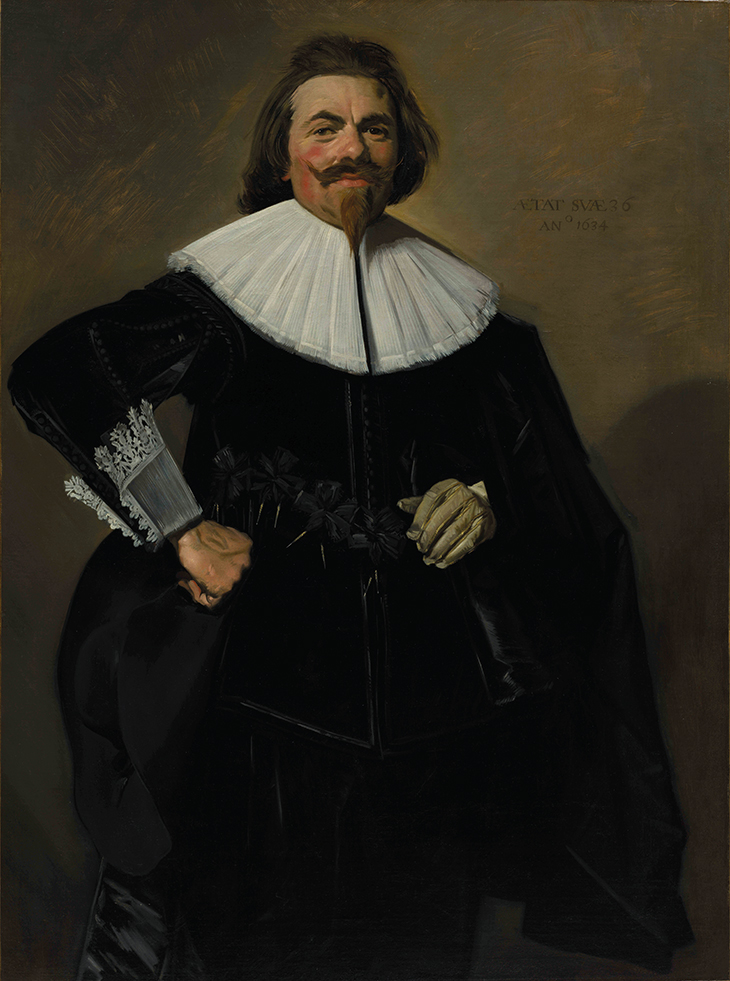
Portrait of Tieleman Roosterman (1634), Frans Hals. Cleveland Museum of Art
What the dabs and flicks of paint impart is that for Hals, portraiture was about communication. His sitters strike a pose but it is less to fix them for all time – in the manner, say, of his contemporary Van Dyck – than to still them momentarily. These virtuoso portraits are records of encounters as much as of men.
‘Frans Hals: The Male Portrait’ is at the Wallace Collection, London, until 30 January 2022.
From the November 2021 issue of Apollo. Preview and subscribe here.
Unlimited access from just $16 every 3 months
Subscribe to get unlimited and exclusive access to the top art stories, interviews and exhibition reviews.

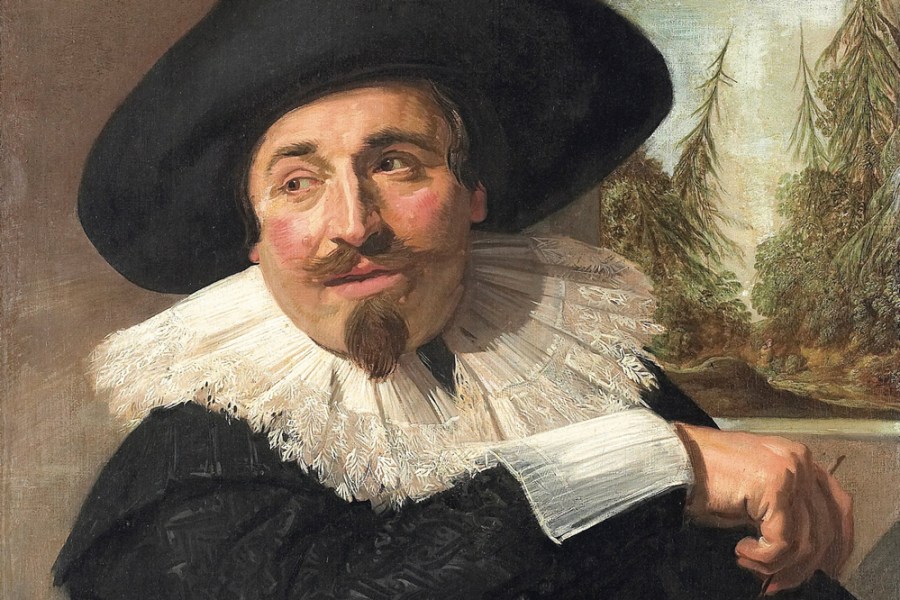
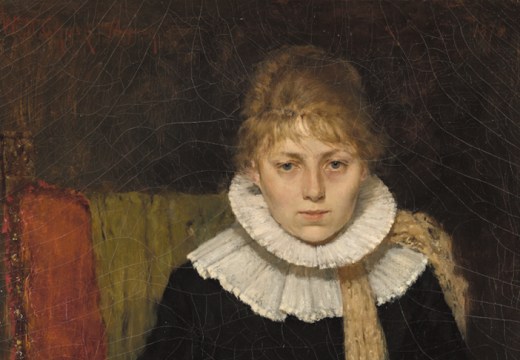
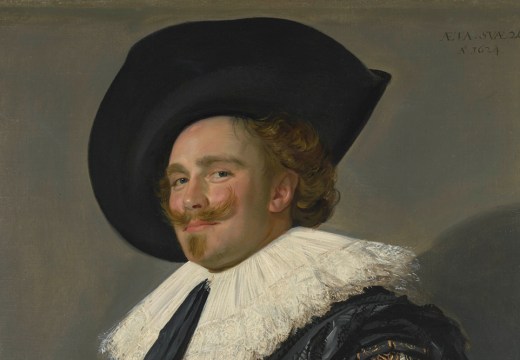
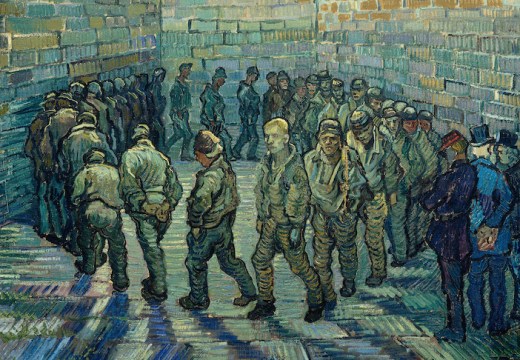









![Masterpiece [Re]discovery 2022. Photo: Ben Fisher Photography, courtesy of Masterpiece London](http://www.apollo-magazine.com/wp-content/uploads/2022/07/MPL2022_4263.jpg)
Why are fathers so absent from art history?